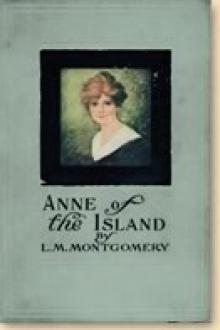At Agincourt, G. A. Henty [i love reading books TXT] 📗

- Author: G. A. Henty
Book online «At Agincourt, G. A. Henty [i love reading books TXT] 📗». Author G. A. Henty
"And to which side do your thoughts incline, Sir Eustace, if I may ask you?"
"I love not either side, Guy, and would fain, if it could be so, that my sword should remain in its sheath. I fear that I shall have to go with Burgundy, for he is all-powerful in Artois; but had I been altogether free to choose, I should have sided with Orleans. In the first place, it is certain that the last duke was foully murdered by Burgundy, who thereby laid the foundation for the present troubles. There were jealousies before, as there have always been between the great nobles, but that act forced almost all to take sides. The Dukes of Berri and Brittany, who had been of the party of the late Duke of Burgundy, were driven by this foul act of his son to range themselves with Orleans. Armagnac is very powerful in the south, Berri's dukedom is in the north, that of Orleans to the north-east. Burgundy's strength lies in his own dukedom,—which has ever been all but independent of France,—in Flanders, in Artois, and in Paris; thus, generally, it is the north and east of France against the south and west. This is broadly the case, but in a civil war provinces and countships, neighbours, ay, and families, become split up into factions, as interest, or family ties, or the desire to increase an estate by annexing another next to it, may influence the minds of men.
"So long as it is but a war between the great dukes and princes of France we smaller men may hope to hold aloof, but, as it goes on, and evil deeds are done on both sides, men's passions become heated, the spirit spreads until every man's hand is against his neighbour, and he who joins not against one or the other finds both ready to oppress and rob him. I should not have cared to bring out an English following with me had we been forced to march any distance through France; but as Villeroy is but a few miles from the frontier, and of that distance well-nigh half is through my own estates, we can reach the castle almost unnoticed. Once there, the fact that I have strengthened my garrison will keep me from attack, for either party would be chary in attacking one who can defend himself stoutly. I was minded to leave your lady and the two younger children in England, but in truth she begged so hard to accompany me that I could not say her nay."
The Castle of Villeroy was somewhat larger than the one in which Guy had been born and brought up. The plan, however, was very similar: there was the central keep, but, whereas at home this was the dwelling-house of the family, it was here used as a storehouse, and the apartments of the count and countess were in the range of buildings that formed an inner court round the keep. In point of luxury the French were in advance of the English, and they had already begun to combine comfort with strength in their buildings. The apartments struck Guy as being wonderfully spacious in comparison to those with which he was accustomed. On the ground floor of one side of the square was the banqueting-hall. Its walls were decorated with arms and armour, the joists that supported the floor above were carved, the windows large and spacious, for, looking as they did into the inner court, there was no occasion for their being mere loopholes. Above the banqueting-hall was a room where Lady Margaret sat with her maids engaged in working at tapestry; here the priest gave such slight instruction as was then considered necessary to Agnes and Charles; Henry had already passed out of his hands.
Next to this room was the knight's sleeping apartment, or closet as it was then called, a room which would now be considered of ridiculously straitened dimensions; and close to it were the still smaller closets of the children. Beyond were a series of guest-chambers. Another side of the court-yard contained the apartments of the castellan, Jean Bouvard, a sturdy soldier of long experience, and those of the other officers of the household; the other two sides were occupied by the chapel, the kitchens, and the offices of the servants and retainers. All these rooms were loopholed on the side looking into the outer court. This was considerably wider and more extensive than the one surrounding the keep. Here were the stables, storehouses for grain and forage, and a building, just erected, for the lodging of the English garrison. All these buildings stood against the outer wall, so that they would afford no shelter to an enemy who had obtained possession of the first defences and was making an attack against the second line. The outer wall was twelve feet in thickness, and thirty feet above the court; outside the height was considerably greater, as there was a moat faced with stone fifteen feet deep entirely surrounding it, and containing seven or eight feet of water.
Walls ran half across the outer court, and, from the end of these, light wooden bridges formed a communication with the wall of the inner court, so that in the event of the outer wall being stormed or the gates being carried by assault, the defenders could retire to the inner defences. The ends of these bridges rested upon irons projecting from the wall, and so arranged that they could be instantly withdrawn when the last of the defenders had crossed over, when the bridges would at once fall into the court-yard below. The inner wall was twelve feet higher than the outer one, and, like it, was provided with a crenellated battlement four feet high; there were projecting turrets at each corner, and one in the middle of each side.
The keep rose twenty feet higher than the wall of the inner court. The lower portions of the cross walls of the outer court were carried on as far as the inner wall, thereby dividing the space into four; strong gates gave communication from one to the other. Into these could be driven the cattle of the tenantry, and one of them contained a number of huts in





Comments (0)